Made with finely ground rice and pine nuts, jatjuk (잣죽) is a nutritious porridge that’s creamy, delicately nutty, and comforting!
Jatjuk (잣죽) is a nutritious porridge I love having for breakfast, especially on cool mornings. It’s creamy, delicately nutty, and comforting! Jatjuk is also great if you (or a loved one) aren’t feeling well because it’s gentle on the stomach but still gives a good boost of energy.
Jatjuk has long been a delicacy in Korea for its refined taste and high nutritional value, coming from pine nuts rich in healthy fats, protein, antioxidants, and minerals. Pine nuts are a prized ingredient in Korea. They are used in a variety of dishes, both as a garnish (e.g., Yaksik, White kimchi, Sikhye) and an ingredient to enhance flavor and nutrition (e.g., Pine nut dressing, Kongguksu).
How to make pine nut porridge
Jatjuk is prepared by simmering finely ground rice and pine nuts. As it cooks, the rice starch and pine nut fat emulsify, giving the porridge its signature buttery and creamy texture. Despite its simple preparation, many struggle with achieving the right consistency, often ending up with a watery porridge.
This can happen because pine nuts contain amylase enzymes which break down rice starch. You can account for this by using proper cooking methods.
Preparation
Pine nuts: Rinse the pine nuts under cold water. Toast them in a dry pan over medium low heat, shaking the pan often, for 3 to 4 minutes for a light toasting. Don’t brown them. You can skip this process if you like.
I use equal parts of rice and pine nuts (1:1 ratio) for a rich nutty flavor. You can reduce the amount of pine nuts if you like, but try to use at least half the rice amount for the flavor and buttery creaminess. Do not reduce the water amount even if you’re using fewer pine nuts.
Rice-to-water ratio: The viscosity and consistency of rice porridges largely depends on the rice-to-water ratio. It usually is 1:6 for other rice porridges, such as dakjuk or jeonbokjuk, depending on the desired consistency. Pine nut porridge needs significantly less water (1:3 ratio), because of the amylase enzymes in pine nuts.
Rinse the rice, soak for an hour or longer, and drain. In a blender, blend the soaked rice and pine nuts with 2 cups of water until it turns like milky liquid, about 30 seconds. It can be longer, depending on the blender. Use the remaining water to swish out the remaining sediments in the blender.
Cooking
Over medium heat, stir gently but frequently along the bottom of the pot. It will get thicken and clump in a few minutes and then turn smooth and thin as it simmers longer.
The finely pureed rice doesn’t take much time to cook. However, it’s important to take the time and simmer the porridge long enough (over 20 minutes for this recipe) to create a smooth texture and denature the enzymes. Otherwise, it can get thinner and watery as it sits after being cooked.
Storing and reheating
Jatjuk can be kept in the fridge for 4 to 5 days. It also freezes well for a longer storage. You can reheat it on the stovetop or in the microwave. Reheat it until it’s hot, but don’t let it boil. It can make the porridge runny.
More porridge recipes
Dakjuk (Chicken porridge)
Jeonbokjuk (Abalone porridge)
Hobak juk (pumpkin porridge)
Patjuk (sweet red bean porridge)
Turkey porridge (with Thanksgiving leftovers)
For more Korean cooking inspirations, follow along on YouTube, Pinterest, Twitter, Facebook, and Instagram.
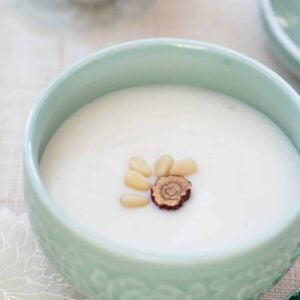
Ingredients
- 1 cup short grain rice
- 1 cup pine nuts (more for optional garnish) You can use 1/2 or 2/3 cup if you like.
- 3 cups water
- salt
- 1 daechu (대추, jujube) - optional garnish
Instructions
- Rinse the rice, soak for an hour or longer, and drain.
- Rinse the pine nuts under cold water. Toast them in a dry pan over medium low heat, shaking the pan often, for 3 to 4 minutes for a light toasting. Don't brown them. You can skip this process if you like.
- In a blender, blend the soaked rice and pine nuts with 2 cups of water until it turns like milky liquid, about 30 seconds. It can be longer, depending on the blender.
- Pour the rice and pine nut water into a pot. Use the remaining 1 cup of water to to swish out the remaining rice and pine nut sediments and add to the pot.
- Turn the heat to medium. Stir gently but frequently along the bottom of the pot for about 6 minutes. The mixture will clump and thicken significantly.
- Reduce the heat to medium low. Let it simmer, stirring occasionally, for 15 minutes or longer. The clumps will gradually break apart, and the porridge will develop a smooth, thick texture, eventually becoming thinner with a nice, flowy consistency. Don’t cut down the cooking time. Wait until the last 3 or 4 minutes to add more water to thin the porridge, if needed.
- You can salt at the last minute if you’re serving the entire pot. Otherwise, serve salt on the side so the diner(s) can add at the table.


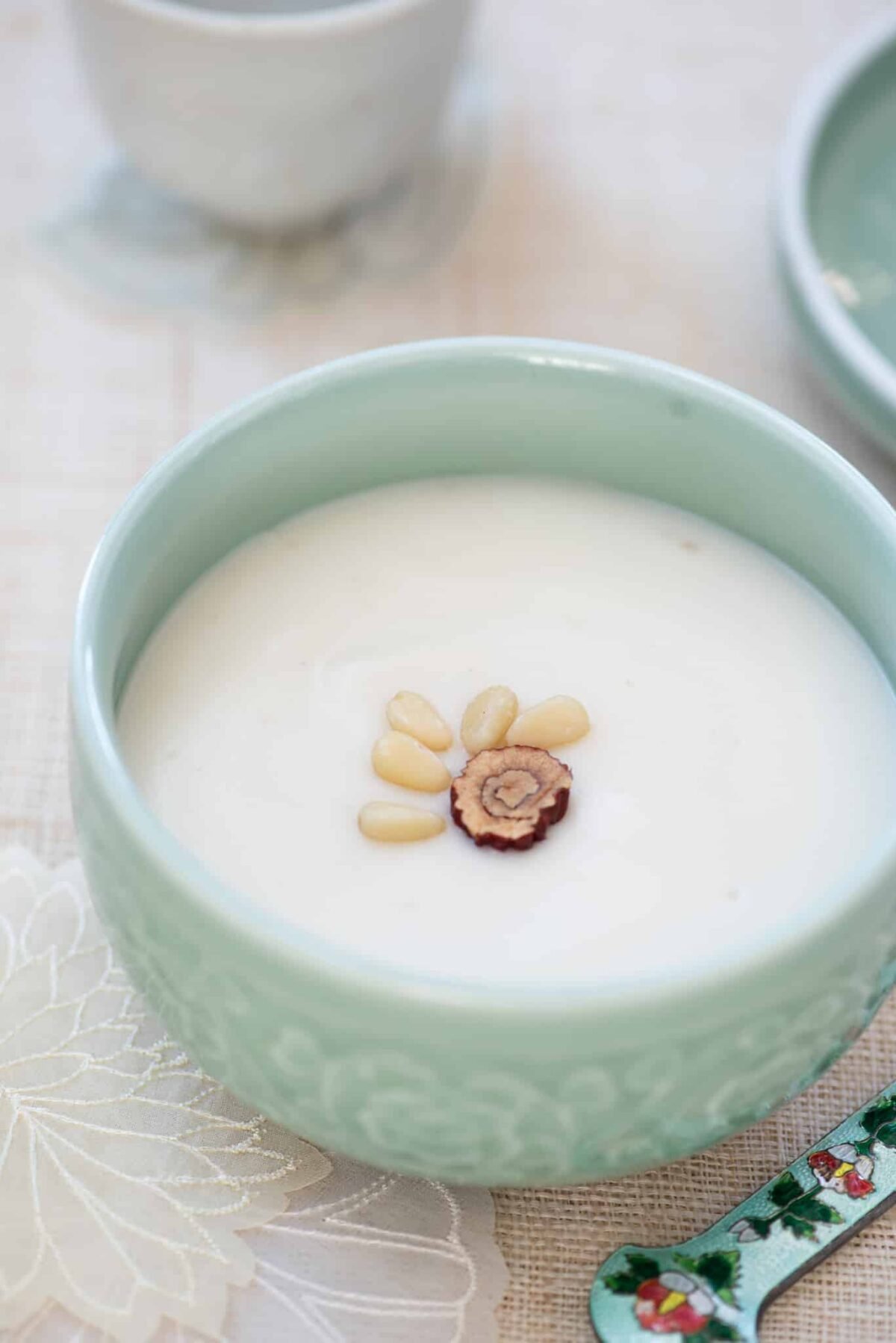
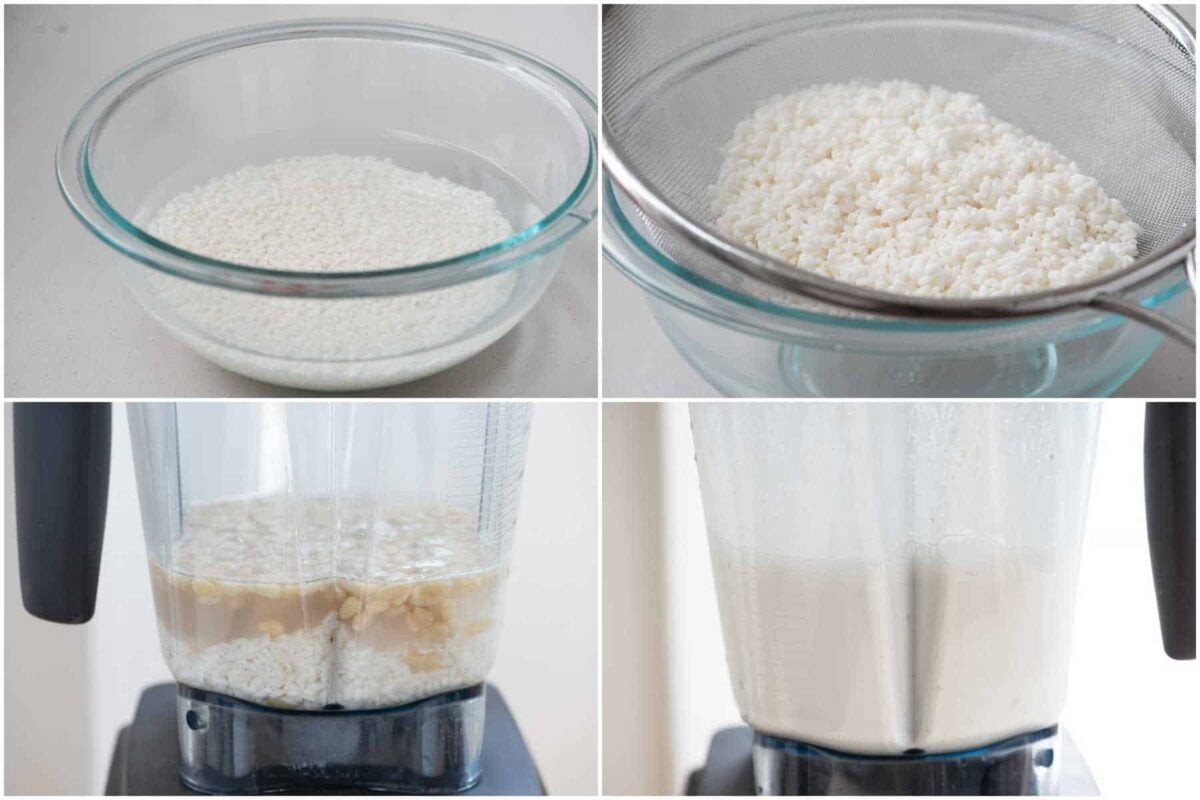
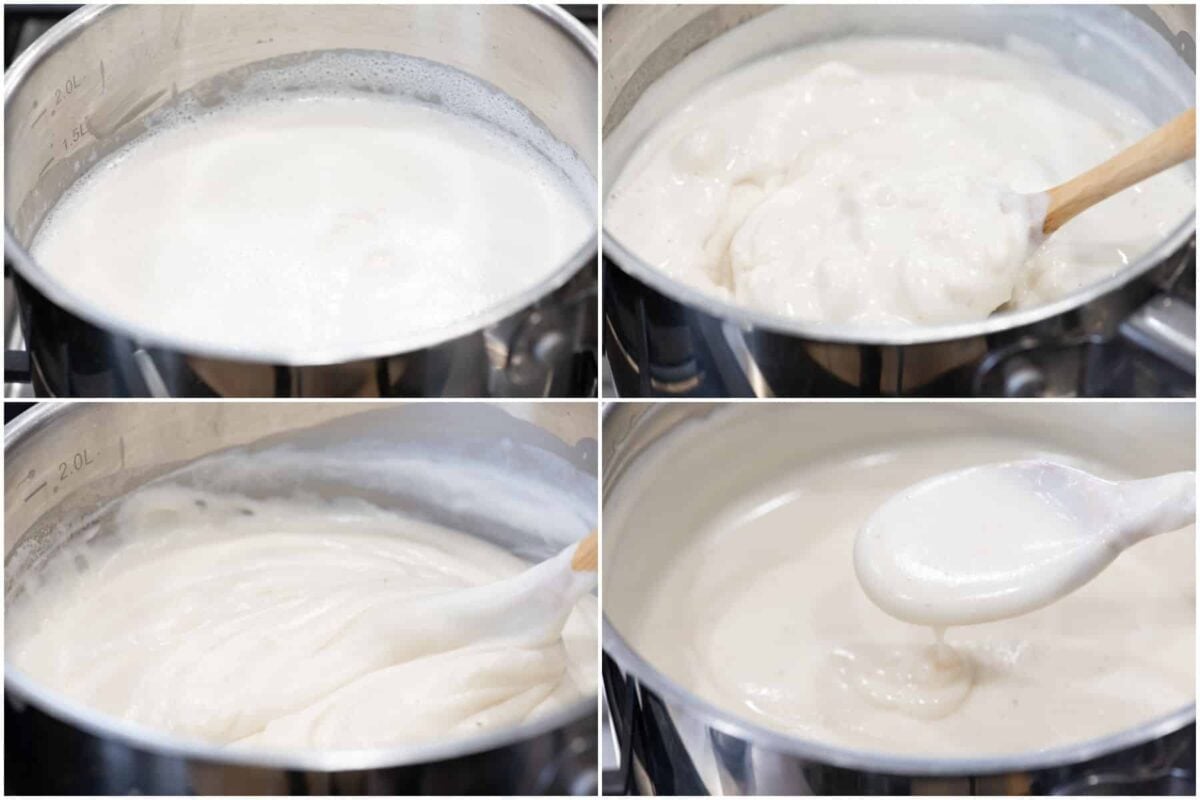
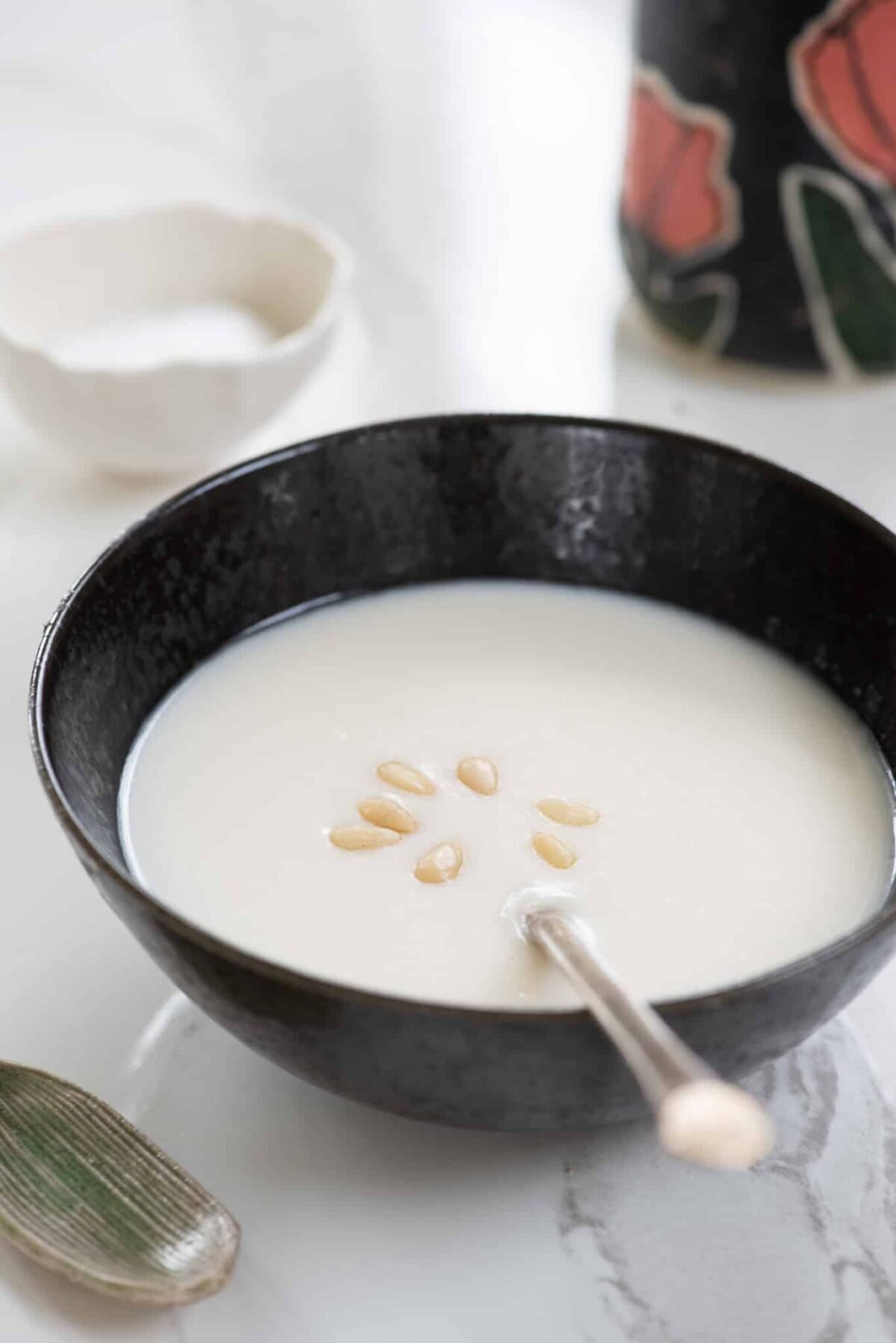

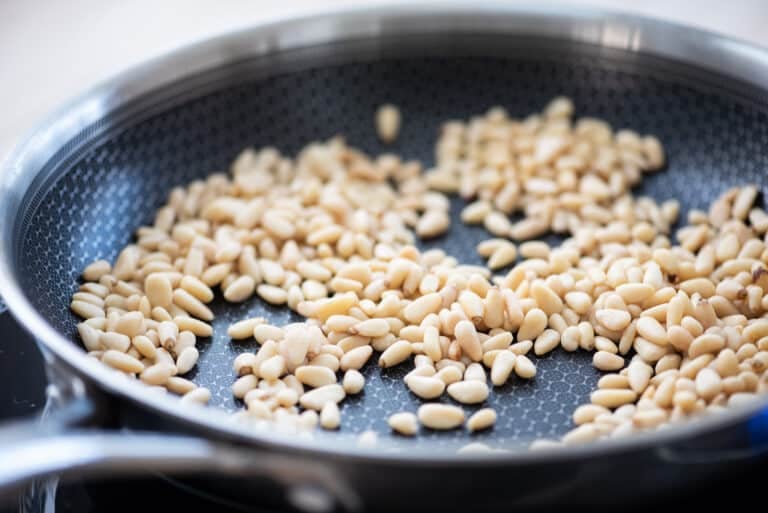
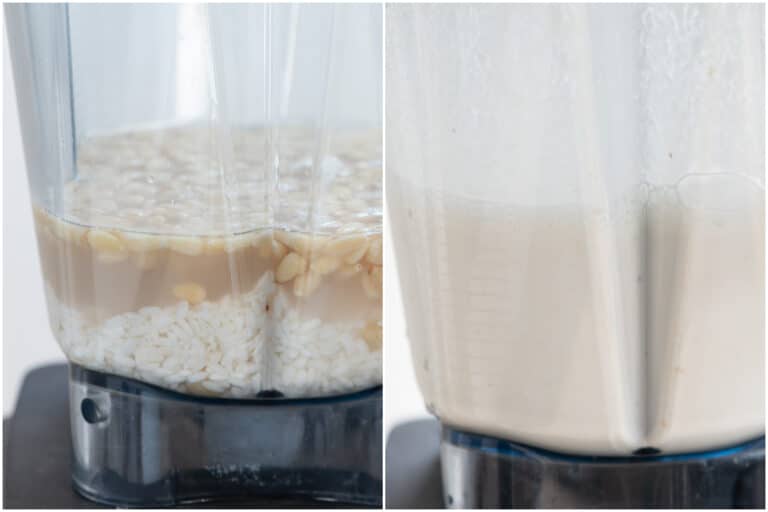
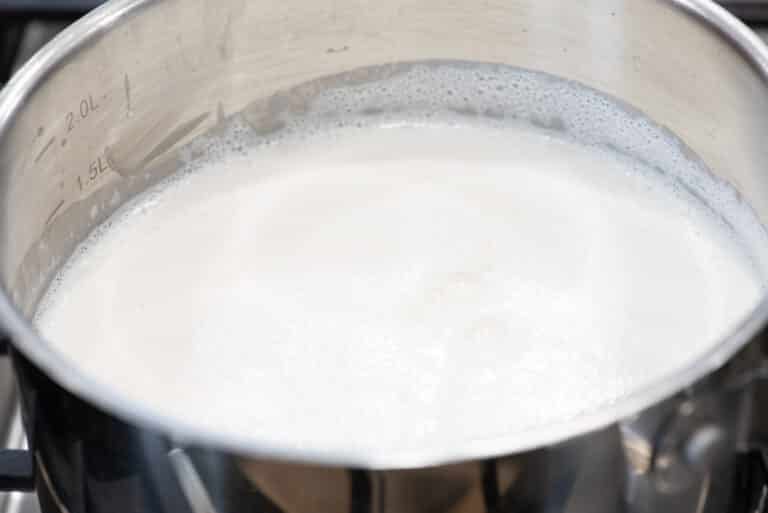
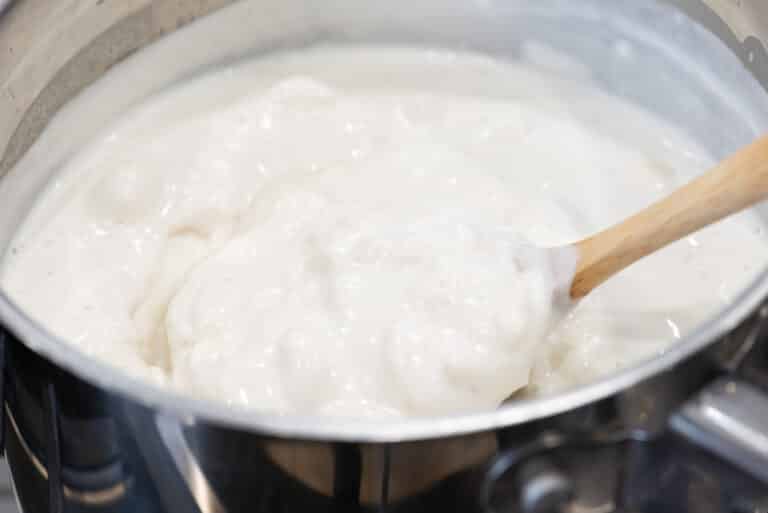
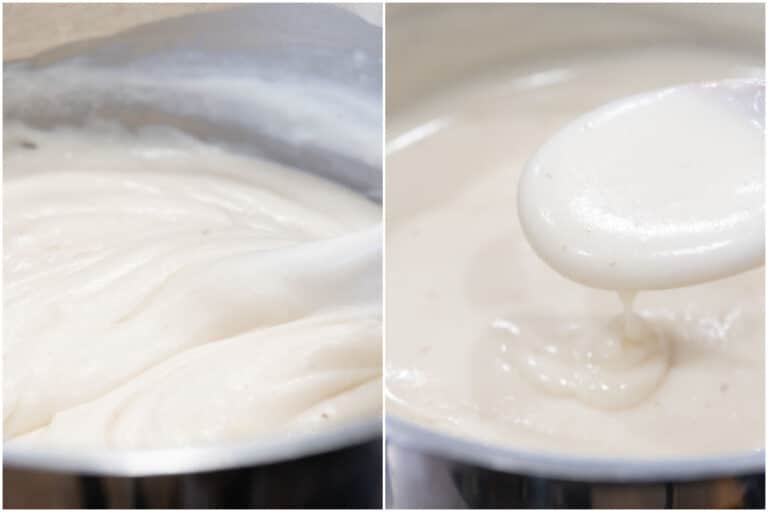
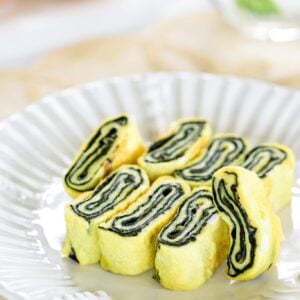
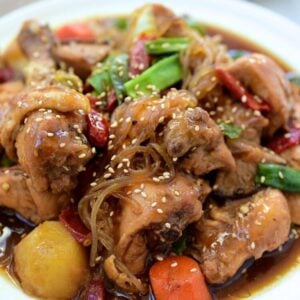
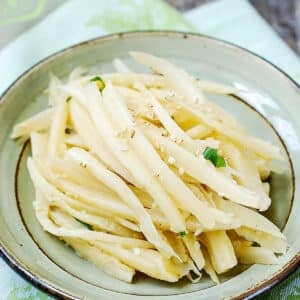
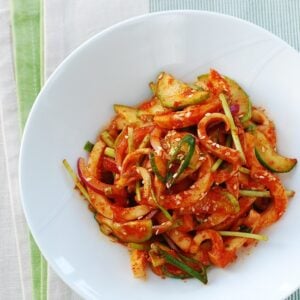













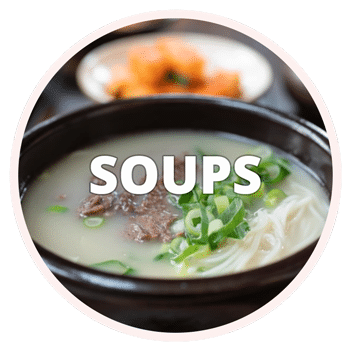



Leave a Reply